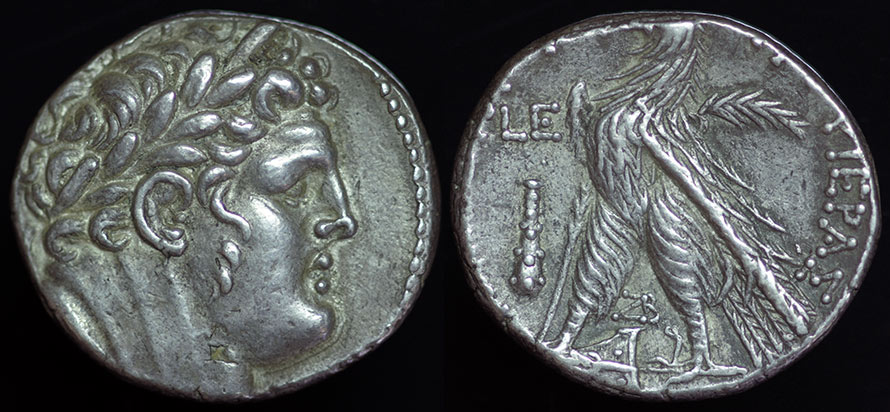SHEKEL OF TYRE OF “30 PIECES OF SILVER” FAME, October 2017
Any short collection of Biblical coins has to include a Shekel of Tyre, which is generally accepted as the money received by Judas Iscariot for the betrayal of Jesus’ whereabouts in the Garden of Gethsemane. Other coins are contenders but the Tyrian shekel weighed four Athenian drachmas, about 14 grams, more than earlier 11-gram Israeli shekels, but was regarded as the equivalent for religious duties at that time. Because Roman coinage was only 80% silver, the purer (94% or better) Tyrian shekels were required to pay the temple tax in Jerusalem. The money changers referenced in the New Testament Gospels (Matt. 21:12 and parallels) exchanged Tyrian shekels for common Roman currency. Therefore, the priests of the Jewish Temple probably dealt mainly with these common coins of value. (en.wikipedia.org/wiki/Thirty_pieces_of_silver)
This silver tetradrachm (Shekel) weighs 14.27 grams, which is the median mass for this series, it is dated ‘Year 5’ which equates to 122 – 121 B.C.E. It bears a portrait of a beardless Melqarth who was the tutelary god of the Phoenician City of Tyre. Being on a smaller and thicker flan, the lion’s skin around his neck is off flan as is the eagle’s head on the reverse. The eagle stands on the “beak” of a galley carrying a palm frond under it’s right wing; in the fielded to the left is a club, a symbol of Herakles (Hercules), with which Melqarth is associated. In this long series of coins two dates stand out: the so-called “millennium shekel,” which was struck in civic year 126, or 1 BC/AD 1. The other, even more in demand, is the issue of civic year 159, or AD 33/4. Following traditional chronologies, this is the year in which Jesus was crucified by the Procurator Pontius Pilate. (CoinWeek)
